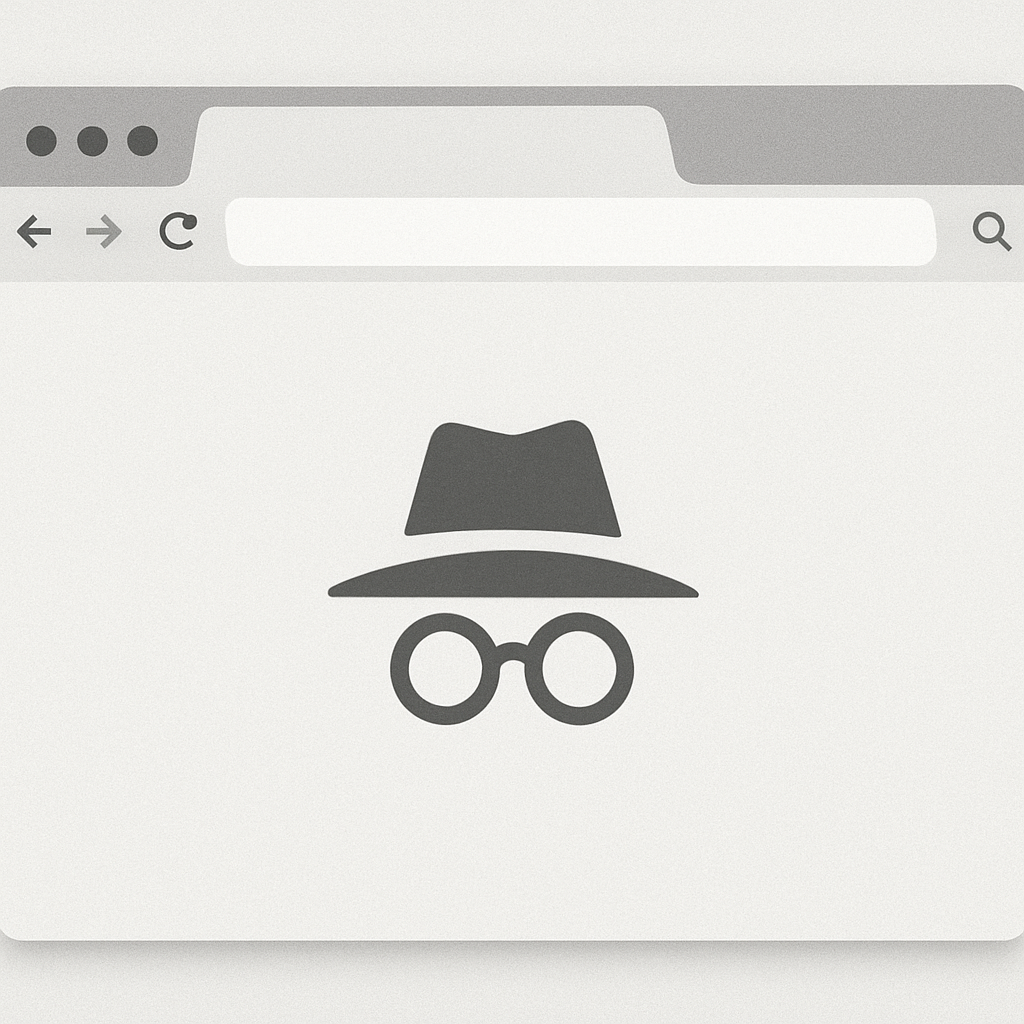In today's digital age, online privacy is a growing concern. Many users seek ways to surf the web anonymously.
Incognito mode is a popular choice for private browsing. It prevents your browser from saving your history and cookies.
However, incognito mode alone doesn't hide your IP address. This is where proxies come into play.
Proxies act as intermediaries, masking your IP and enhancing your privacy. Combining incognito mode with proxies offers a robust solution.
This combination ensures your online activities remain private and secure. It's a simple yet effective way to protect your data.
In this guide, we'll explore how to use incognito mode with proxies. You'll learn to enhance your online privacy effortlessly.

Understanding Incognito Mode: What It Does and Doesn’t Do
Incognito mode offers a way to browse without saving data locally. It is available in most modern browsers like Chrome and Firefox. When activated, your browser won’t store cookies or browsing history.
However, incognito mode has its limitations. It doesn't hide your IP address or encrypt your internet traffic. Your Internet Service Provider (ISP) can still track your activities.
Moreover, websites can still identify you using cookies or fingerprinting. This means they may track your activity during a session. It's crucial to understand what incognito mode protects against.
Key Features of Incognito Mode:
- Does not save browsing history.
- Prevents cookies from being stored after sessions.
- Doesn't save form data or passwords.
- Doesn’t hide your IP or encrypt traffic.
Using incognito mode alone is not enough for full privacy. It should be used with other online privacy tools for effective protection. Combining it with proxies is one such way.
By understanding the scope of incognito mode, users can make informed decisions. It’s essential for developing a comprehensive online privacy strategy.

What Are Proxies? Types and How They Work
Proxies function as middlemen between your device and the internet. They act by forwarding your requests and masking your IP address. This process enhances your privacy and can even help bypass regional restrictions.
There are different types of proxies available. Each one is suitable for specific needs. Understanding these can help you choose the right proxy for your purposes.
Types of Proxies:
- HTTP Proxies: Best for web browsing and offer basic functionality.
- HTTPS Proxies: Provide secure connections with encryption support.
- SOCKS Proxies: Versatile and can handle traffic for various protocols.
- Mobile Proxies: Use mobile IPs to provide better anonymity and access.
Each proxy type comes with its advantages and disadvantages. HTTP proxies are fast but less secure, while HTTPS offers more safety. SOCKS can handle more traffic types, offering flexibility, but may be slower.
Mobile proxies are increasingly popular for their unique IP addresses. They are ideal for tasks needing dynamic IPs. This is particularly useful in avoiding bans and accessing geo-restricted content.
Understanding how proxies work can guide you in enhancing online privacy. Choose the type that aligns with your needs for optimal results.
Why Combine Incognito Mode With Proxies?
Combining incognito mode with proxies significantly boosts your online privacy. While incognito mode prevents local data storage, proxies hide your real IP address. This dual approach creates a more secure internet experience.
Incognito mode alone can't provide full anonymity. Websites can still track you via cookies and detect your IP. Proxies bridge this gap by masking your IP, adding an extra layer of privacy.
By using both incognito mode and proxies, you reduce digital footprints. This combination ensures both local and external privacy. Thus, you strengthen your defense against unwanted data collection.
Key Benefits of Combining Incognito Mode With Proxies:
- Enhanced Privacy: Prevents local and remote tracking.
- Anonymous Web Surfing: Disguises your IP, limiting exposure.
- Bypass Restrictions: Access blocked content securely.
- Prevent Tracking: Decrease third-party tracking risks.
This combination offers a balanced approach to secure browsing. It's a simple yet effective solution for protecting personal data online. By layering these technologies, you make it harder for your activities to be tracked.
Step-by-Step Guide: Using Incognito Mode With Proxies
Pairing incognito mode with proxies is straightforward. Follow these steps to enhance your online privacy.
- First, activate incognito mode on your browser. In Chrome, open a new incognito window via the menu. For Firefox or Safari, similar options are available in the respective menus.
- Next, set up a proxy server. Choose a reliable proxy service. Paid services generally offer better security and speed.
- Configure the proxy in your browser settings. In Chrome, go to settings, then 'advanced.' Under 'system,' you'll find 'open proxy settings.'
- Enter the proxy details provided by your service. This includes the server address and port number. Ensure these are correct to avoid connection issues.
Steps to Configure Proxy in Chrome:
- Open Chrome and navigate to settings.
- Select 'advanced' and go to 'system.'
- Click on 'Open proxy settings.'
Using the Proxy:
- Test the setup by visiting "What is my IP" websites.
- Compare the IP shown with your actual IP.
- Ensure they differ to confirm successful proxy setup.
Finally, remember to use both tools together. Incognito mode clears local activity, while the proxy masks your external connection.
By following these steps, you create a secure browsing environment. This setup minimizes data exposure and helps maintain anonymity. Always verify your connections and settings for maximum effectiveness.
Mobile Proxy Solutions for Anonymous Web Surfing
Mobile proxies offer a unique way to maintain your privacy on the go. They assign IP addresses based on mobile networks, making them distinct from standard proxies.
These proxies are particularly effective for anonymous web surfing on mobile devices. They help access geo-restricted content and ensure secure browsing.
Setting up a mobile proxy is simple. You can use apps designed for Android or iOS, which offer intuitive setups. Choose from a range of mobile proxy services to suit your needs.
Benefits of Mobile Proxies:
- Geo-Location Flexibility: Access content across regions easily.
- Enhanced Security: Greatly boosts online privacy on phones.
- Reduced Censorship: Easily bypass national or local restrictions.
When using mobile proxies, consider your data usage. Some services require significant bandwidth. It's also wise to select reputable, paid services for the highest security.
Mobile proxies ensure you're protected while browsing outside your home network. They provide a convenient, secure way to maintain online privacy wherever you are. This helps protect personal data from potential threats or surveillance.
Comparing Proxies With Other Online Privacy Tools
Understanding how proxies stack up against other privacy tools is essential for informed choices. VPNs, for instance, provide robust encryption but often at higher costs and with more significant speed drops.
Proxies, however, focus on hiding your IP address without encrypting your data. This makes them quicker but less secure compared to VPNs. They are a practical choice for bypassing simple geographic restrictions.
How Proxies Compare:
- VPNs: Offer encryption, but can slow down connections.
- Tor: Provides high anonymity but at the cost of speed.
- Incognito Mode: Doesn't hide IP address; only prevents local history.
Ultimately, choosing the right tool depends on your priorities. If full encryption is less critical, proxies offer quick, straightforward solutions. For top-tier security, consider pairing proxies with VPNs or other tools. This combination can provide balanced online privacy tailored to your needs.
Common Issues and How to Troubleshoot Them
Using incognito mode with proxies can sometimes bring up technical challenges. Slow internet speed is a frequent complaint, often caused by the proxy server's additional routing. Choosing a reliable proxy service can help mitigate this issue.
Connection errors are another common problem. These can occur when proxy settings are incorrectly configured. Double-check your settings to ensure they're correctly applied.
Steps to Resolve Common Problems:
- Check Internet Speed: Run a speed test to identify bottlenecks.
- Verify Proxy Settings: Ensure the correct port and IP are in use.
- Server Status: Confirm the proxy server is operational.
- Contact Support: Reach out to your service provider if issues persist.
Security concerns can arise, especially with free proxies that might log data. Opt for trusted, paid proxy services to reduce risks. Lastly, occasionally clear your cache and cookies to troubleshoot frequent disconnections. This can refresh connections and resolve certain obstacles. Each of these actions can improve your experience, making your anonymous surfing both smooth and secure.
Best Practices for Maximum Online Privacy
Achieving the highest level of online privacy involves blending various tools and strategies. Always keep your software and devices updated to protect against vulnerabilities. Updates frequently include patches for security holes.
Using a combination of privacy tools can enhance security. Incognito mode with proxies is a strong foundation for private browsing. Adding a VPN can give an extra layer of protection.
Enhance Your Privacy With These Tips:
- Avoid using public Wi-Fi without a VPN.
- Regularly clear cookies and cache.
- Enable two-factor authentication.
- Use encrypted messaging apps for sensitive communication.
Educating yourself about digital threats is also vital. Stay informed about new privacy tools and best practices to safeguard your data. By taking these steps, you can build a strong defense against online threats, ensuring your information remains secure.
Conclusion: Take Control of Your Online Privacy
Combining incognito mode with proxies boosts your online privacy. This combination prevents your browsing history from being stored locally and masks your IP address. You ensure a more secure surfing experience by leveraging these tools together.
Consider using mobile proxies and other online privacy tools for complete protection. These measures safeguard your data and enhance internet anonymity. No longer worry about unwanted digital footprints.
In a world where digital privacy is constantly challenged, taking proactive steps is key. By understanding and implementing these techniques, you empower yourself to surf the web with confidence and peace of mind. Protect your data, protect yourself.
FAQ: Frequently Asked Questions
1. What is the difference between incognito mode and regular browsing?
Incognito mode prevents your browser from saving your browsing history, cookies, and data, while regular browsing keeps this information saved. However, neither option hides your IP address or encrypts your connection.
2. Can I use free proxies with incognito mode?
Yes, you can use free proxies, but they often come with risks such as slower speeds, potential data logging, and security vulnerabilities. It's generally safer to choose reputable paid proxy services for better privacy and performance.
3. Do I still need a VPN if I use incognito mode with proxies?
Using a VPN alongside incognito mode and proxies can provide an additional layer of security by encrypting your internet traffic. This combination enhances your overall online privacy.
4. Are mobile proxies better than regular proxies?
Mobile proxies can offer better anonymity and access to geo-restricted content, especially for mobile browsing. They use IP addresses from mobile networks, making them distinct from standard proxies. However, the choice depends on your specific needs and usage.
5. What can I do if my proxy connection fails?
If your proxy connection fails, double-check the proxy settings you configured in your browser. Ensure that the server address and port number are correct, and consider switching to a different proxy server or service if problems persist.
6. How often should I clear my browser's cache and cookies?
It's a good practice to clear your browser's cache and cookies regularly, especially after using incognito mode. Doing so helps to minimize tracking and ensures smoother browsing experiences.








